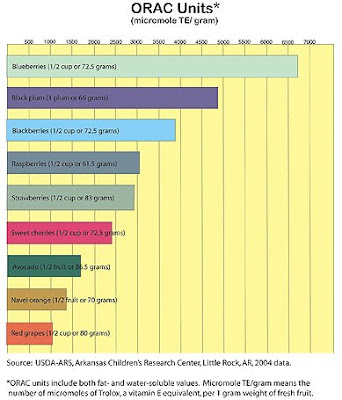Menopause: Hormone Replacement Therapy and NSAIDs
There is currently a great deal of uncertainty regarding the effect of hormone replacement therapy on heart disease in women subsequent to menopause. Premenopausal women are much less likely to experience heart attacks and strokes than men, a difference that does not exist between postmenopausal women and men.
One mechanism that might explain these observations relates to the effect of estrogen, which is thought to have a protective effect on the heart. Hormone replacement therapy consisting of replacement estrogen, and sometimes progesterone as well is often taken by women experiencing symptoms of menopause.
Evidence from observational studies and the Women’s Health Initiative (WHI) trial has suggested that hormone therapy protects against heart disease in the time just before and after menopause in women (perimenopause).
However, researchers have suggested that any beneficial effect of hormone replacement therapy on the heart might be counteracted by the effects of certain types of painkillers also being taken by women involved in the studies.
These painkillers, non-steroidal anti-inflammatory drugs (NSAIDs), prevent production of a molecule called prostacyclin. Prostacyclin plays a role in preventing blood clotting and is therefore thought to be important in protecting the heart.
Estrogen, however, acts to increase production of prostacyclin, and it is therefore theoretically possible that hormone replacement therapy does have a beneficial effect on heart health, but which is counteracted by the negative effects of NSAIDs.
In a 2007 study carried out by researchers in Spain and the United States, researchers wanted to find out whether there was any evidence for an interaction between NSAID use, hormone replacement therapy, and heart disease. Such understanding in turn might help to identify more clearly whether hormone replacement therapy protects against heart disease in specific subgroups of postmenopausal women.
This study was carried out using information from the UK's General Practice Research Database, which is the largest computer database of anonymous medical records from primary care anywhere in the world. It contains information entered by UK general practitioners on their patients' drug prescriptions, diagnoses, referrals to hospital, and other data.
The researchers searched for all individuals from the database who were aged between 50 and 84 years on 1 January 1997, and then followed them up through the database for four years, or until the individual died, reached 85 years of age, or was diagnosed with a heart attack or cancer.
From this search, the researchers found 1,673 women who had heart attacks or who died from coronary heart disease; these were considered “cases.” Then, these 1,673 women were matched against 20,000 “control” women of similar age.
Information was pulled out for each case or control on their use of hormone replacement therapy, NSAIDs (covering 21 different drugs, but most commonly diclofenac, ibuprofen, and naproxen), and various risk factors for heart disease.
The researchers then compared the use of hormone replacement therapy and NSAIDs between the cases and controls, while making statistical adjustments for other risk factors (such as diabetes and smoking, for example).
The researchers found that current use of hormone replacement therapy was associated with a lower risk of heart attack than non-use. The odds ratio (chance of a heart attack among hormone replacement therapy users compared to the chance among non-users of hormone replacement therapy) was 0.78.
However, when looking at women who used NSAIDs at the same time as hormone replacement therapy, the researchers found no suggestion of a reduction in risk of heart attack: the odds ratio for the chance of heart attack among this group of women, as compared to nonusers of both NSAIDs and hormone replacement therapy, was 1.50.
The researchers findings suggest that hormone replacement therapy and NSAIDs might interact, with NSAIDs acting against a role for hormone replacement therapy in preventing heart attacks.
Citation: Editors' Summary: García Rodríguez LA, Egan K, FitzGerald GA (2007) Traditional Nonsteroidal Anti-Inflammatory Drugs and Postmenopausal Hormone Therapy: A Drug–Drug Interaction? PLoS Med 4(5): e157 doi:10.1371/journal.pmed.0040157. Copyright: © 2007 Rodríguez et al. This is an open-access article distributed under the terms of the Creative Commons Attribution License.
Related articles:
Hormone Therapy for Menopause - Increased Risk of Breast Cancer
Menopause Symptoms Return after Hormone Therapy




 Coenzyme Q10 appears to increase the duration of exercise to exhaustion in healthy untrained and trained individuals.
Coenzyme Q10 appears to increase the duration of exercise to exhaustion in healthy untrained and trained individuals. In people who have dramatically elevated levels of homocysteine, different food supplements have been shown to bring down homocysteine levels and to reduce the risk of
In people who have dramatically elevated levels of homocysteine, different food supplements have been shown to bring down homocysteine levels and to reduce the risk of 
 Muscadine grapes are a natural food source for lowering both total cholesterol and LDL (bad) cholesterol levels, blood pressure, triglycerides and also protects against coronary heart disease, gastrointestinal diseases, and colon cancer.
Muscadine grapes are a natural food source for lowering both total cholesterol and LDL (bad) cholesterol levels, blood pressure, triglycerides and also protects against coronary heart disease, gastrointestinal diseases, and colon cancer. 

